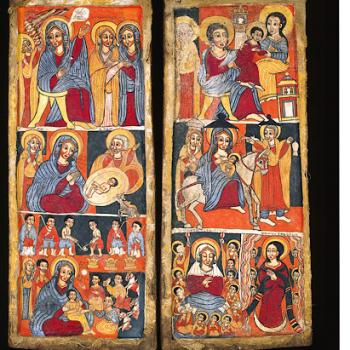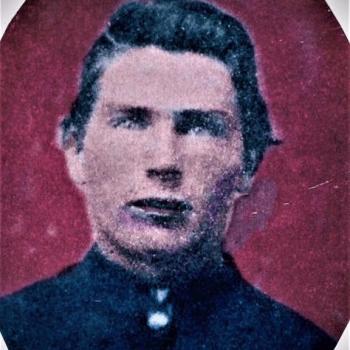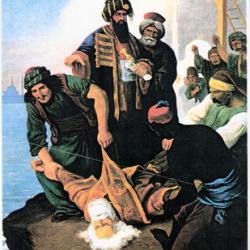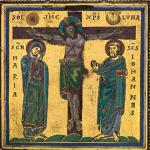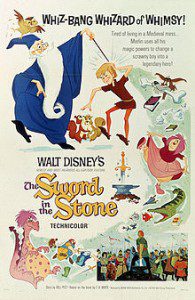 Walt was dying the year I was born, but nobody knew it yet, not even Walt. His genius had turned to Disneyworld and away from animation. Mary Poppins was very profitable, but Sleeping Beauty had failed. To make things worse, the Disney studio challenged the curse of King Arthur: the universal rule that anything based on the Matter of Britain in pop culture will be dreadful, forgettable, crude, or worse. This curse is best described in the wonderful Lyre of Orpheus written by the underrated Robertson Davies.
Walt was dying the year I was born, but nobody knew it yet, not even Walt. His genius had turned to Disneyworld and away from animation. Mary Poppins was very profitable, but Sleeping Beauty had failed. To make things worse, the Disney studio challenged the curse of King Arthur: the universal rule that anything based on the Matter of Britain in pop culture will be dreadful, forgettable, crude, or worse. This curse is best described in the wonderful Lyre of Orpheus written by the underrated Robertson Davies.
Sword in the Stone confirms the curse; even Disney could not make a great film about Arthur, just as TH White had failed to write a decent series the more he got involved in the British myth. Thank God that Tolkien refrained from redoing Arthur and gave Britain a new and better mythology in Lord of the Rings.
This is a fine little film, but it is isn’t a great one. Sword in the Stone is the first full scale animated Disney film for which there is no excuse for less than greatness. Yet without Walt’s full attention and his best people, like the Sherman Brothers, the film collapses into Disney habits without the Disney magic. There is nothing wrong with the film, but precious little right with it.
Walt would make a last film in Jungle Book, a much better film, but Sword in the Stone proved that the less Walt Disney there was, and soon there would be none, the more derivative, imitative, and forgettable the films would be. The humor is no longer innocent, but childish (“Marvin” instead of “Merlin” Hardee har-har!), slapstick without the light touch, and the entire film feels slap dash. The animation lacks beauty and the voice acting is inconsistent as Wart is obviously done by two different people.
What did Walt teach me?
Walt should have never have let this film out because Disney meant high quality animation. The War years had been a struggle, but he was still pushing the edge of what he had left. To make money for his dreams, Walt had been willing to make live action films that were marginal, throw away projects that did not harm the “brand.” A film like Sword in the Stone challenges the core brand: it feels like animation made to make money and only to make money.
This was an epic error and Walt Disney made it. He recovered in Jungle Book, shifting the Sherman Brothers to the music. Sword in the Stone was not that bad by “other” studio animation standards of the time, but Walt had set the precedent. His company would take the art they created to advance and put out “crown jewel” made of plastic.
There is a story that Walt hired Dick Van Dyke because the comic bemoaned the move toward “dirty movies” in the press. Walt agreed and Van Dyke ended up in Mary Poppins. By now we know Walt was right: morality was warped (partly) by mass numbers of people consuming films written to appeal to their base instincts instead of their better natures. Walt did not respond by making better films, more innocent and yet adult, but by turning to childhood and easy appeal to “the kids.”
There was a narrow step from this to childish films: the Piglet Movie, a film no adult can enjoy, was the natural outcome. Instead of meaning “fit for everyone,” the hardest thing to write, a “G” movie started meaning dull, doltish, and childish. “Adult” meant merely nasty. Walt proved this need not be true in Mary Poppins, but sadly Poppins was still a children’s book adapted.
Walt was not making family films with Sword in the Stone: he was making an animated film for children that adults struggled to enjoy. This was a horrific precedent: smart meant wicked, innocent mean dull. He had done better, but he lacked the worldview and time to do better. If there is a reason to hate cigarette smoking, his early death when we most needed him to keep growing is a good one . . . and the very year of Sword in the Stone, tobacco would kill CS Lewis just as he was hitting the height of his literary powers (Till We Have Faces). Pixar began to make films and then there were smart family films again from an American animation company. Incredibles is the film Walt should have made, not Sword in the Stone.
There was a good theme to the film: brains over brawn, right making might. This was the theme in the book that must have appealed to Walt at the start and the point is a good one. As a nerdy little boy with little brawn, I needed the encouragement! “Big” does not mean “better” and “strong” can mean a stench and not a good thing. Walt loved Lincoln and the great President was correct when he said that our siding with a righteous cause gives strength. Moral strength and love are greater than brute force.
The film does a good job showing that might can do a great deal of damage when disconnected from right. Arthur (Wart) will attempt, best he can, to join might to right. He will put brawn in the service of noble brains.
Sadly, Walt used his marketing muscle to push this brainless film on us: marketing brawn over brains.
If you think this film is “not so bad” and contains some wonderful moments (Madame Mim!), then you are right. Walt set a higher standard, however, and in this area of full length animated films, he failed his own high standards. By doing so, he doomed animation for decades after his death to further mediocrity and family films to ever declining IQ.
This was failure indeed.







